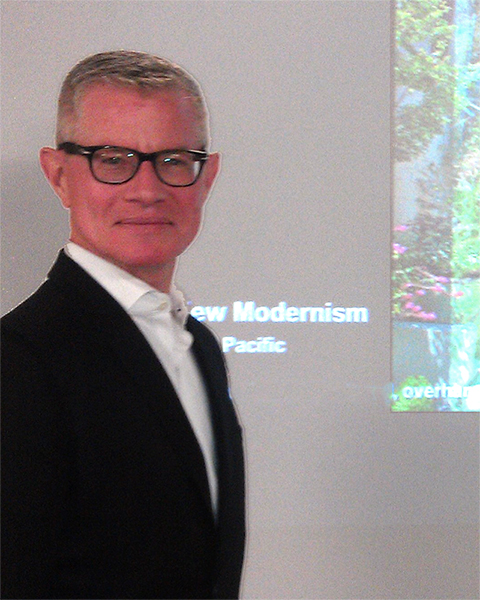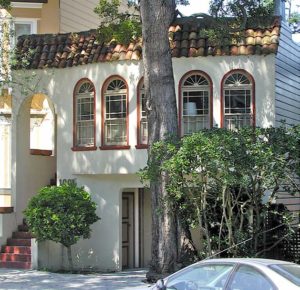Monday, April 24, 2017

James Dixon gave a dynamic, richly informed talk about San Francisco’s residential housing styles from 1920 to the present. In addition to describing the housing styles themselves, he explored the historical, cultural, and architectural influences that produced them. He also gave us an architect’s understanding of the workmanship the styles called for. He was not shy about evaluating them. He spoke for close to 90 minutes, then stayed to answer questions. When the evening was over, we had enjoyed a college-level seminar from a brilliant professor, without the homework and exams.
After both world wars, San Francisco reinvented itself as it faced the challenge of housing the many people who flocked here. The largely middle class newcomers did not need and could not afford houses with the grand floor plans of the Victorian and Edwardian eras. Largely on the city’s West Side, San Francisco responded to the challenge with a variety of new styles that not only reflected the city’s changing makeup but helped define how America would house its burgeoning middle class.
Dixon explored that dynamic laboratory of innovation. He covered nine specific styles: (1) Spanish Eclectic/Mediterranean Revival; (2) Art Deco; (3) International Style; (4) Streamline Moderne; (5) Bay Area Modernism: Second Bay Area; (6) Bay Area Modernism: Third Bay Area Style; (7) Eichlers; (8) Postmodernism; (9) New Modernism.

Audience members received a time chart showing when the styles happened and the events that influenced them. The chart comes from Dixon’s website, which also provides narrated videos in which Dixon briefly describes each style. But the videos do not capture his depth of understanding, passion for the subject, and conversational, engaging speaking style. A written, illustrated description of each style appears on the website of a local realtor, courtesy of Dixon.
James Dixon is a San Francisco architect whose mentor was the late Aaron Green, the last professional link to Frank Lloyd Wright. Green completed the Marin County Civic Center after Wright’s death. Dixon is an expert on architectural styles in the Bay Area and frequently lectures on that subject.